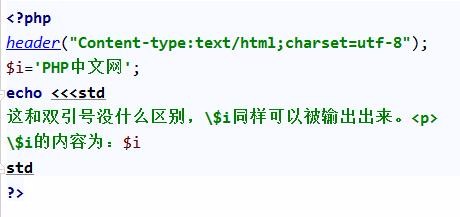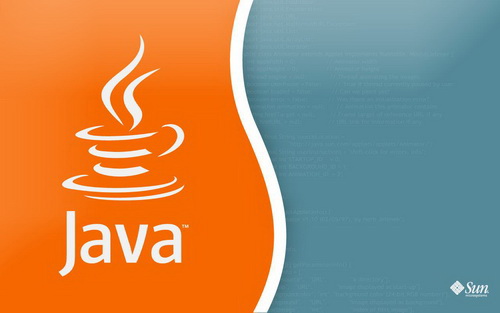10 recommended articles about php string (String)
What is a string? A string is a continuous sequence of characters, consisting of numbers, letters and symbols. Each character in the string takes up only one byte. In PHP, there are three ways to define strings, namely single quotes ('), double quotes (") and delimiters (<<<). Single quotes and double quotes are often used to define strings method, defined as follows: single quote double quotesThe difference between single quotes and double quotes is that the variables contained in double quotes will be automatically replaced with actual values, while the variables contained in single quotes will be output as ordinary characters. What does this replacement mean? Well, let’s take an example of the difference between single quotes and double quotes in defining strings
1. php: Detailed explanation of string data type examples

Introduction: A string is a continuous sequence of characters, consisting of numbers, letters and symbols. Each character in the string takes up only one byte. In PHP, there are three ways to define strings, namely single quotes ('), double quotes (") and delimiters (<<<).
2. Parsing PHP data type string (String)

##Introduction: a string String is composed of a series of characters, each character is equivalent to one byte. This means that PHP can only support 256 character sets, so see the detailed explanation of string types. Note: string...#.
##3.Detailed introduction to verify whether Java is a pure object-oriented language

4.
[c# tutorial] C# characters. String

[JavaScript Tutorial] JavaScript data types
Introduction: String, Number, Boolean , array (Array), object (Object), empty (Null), undefined (Undefined)  ##6.
##6.
##.
Introduction: A string string is composed of a series of characters, each character is equivalent to one byte. This means that PHP can only support 256 character sets, so Unicode is not supported. See the detailed explanation of string types. Note: The maximum size of string can be 2GB.
 7. php string operators
7. php string operators
Introduction: There are two string operators. The first is the concatenation operator ("."), which returns the concatenated string of its left and right arguments. The second is the concatenation assignment operator (".="), which appends the right argument to the left argument. See Assignment Operators for more information. 8. Data types in PHP (1)_PHP tutorial Introduction: Data types in PHP ( 1). PHP supports eight primitive types. Four scalar types: boolean, integer, float (floating point number, also called "double"), string, two types Introduction: Data types in PHP (1). PHP supports eight primitive types. Four scalar types: boolean, integer, float (floating point number, also called "double"), string, two types ## Introduction: dict Dictionary (dict) is the core data structure in redis. As its full name Remote Dictionary Service says, redis actually It is a dictionary service. The dictionary is presented to the user in the form of key and value. The key is a simple string, and the value can be various data structures, such as string, linked list, and set 
The above is the detailed content of 10 recommended articles about php string (String). For more information, please follow other related articles on the PHP Chinese website!

Hot AI Tools

Undresser.AI Undress
AI-powered app for creating realistic nude photos

AI Clothes Remover
Online AI tool for removing clothes from photos.

Undress AI Tool
Undress images for free

Clothoff.io
AI clothes remover

Video Face Swap
Swap faces in any video effortlessly with our completely free AI face swap tool!

Hot Article

Hot Tools

Notepad++7.3.1
Easy-to-use and free code editor

SublimeText3 Chinese version
Chinese version, very easy to use

Zend Studio 13.0.1
Powerful PHP integrated development environment

Dreamweaver CS6
Visual web development tools

SublimeText3 Mac version
God-level code editing software (SublimeText3)

Hot Topics
 Explain JSON Web Tokens (JWT) and their use case in PHP APIs.
Apr 05, 2025 am 12:04 AM
Explain JSON Web Tokens (JWT) and their use case in PHP APIs.
Apr 05, 2025 am 12:04 AM
JWT is an open standard based on JSON, used to securely transmit information between parties, mainly for identity authentication and information exchange. 1. JWT consists of three parts: Header, Payload and Signature. 2. The working principle of JWT includes three steps: generating JWT, verifying JWT and parsing Payload. 3. When using JWT for authentication in PHP, JWT can be generated and verified, and user role and permission information can be included in advanced usage. 4. Common errors include signature verification failure, token expiration, and payload oversized. Debugging skills include using debugging tools and logging. 5. Performance optimization and best practices include using appropriate signature algorithms, setting validity periods reasonably,
 What are Enumerations (Enums) in PHP 8.1?
Apr 03, 2025 am 12:05 AM
What are Enumerations (Enums) in PHP 8.1?
Apr 03, 2025 am 12:05 AM
The enumeration function in PHP8.1 enhances the clarity and type safety of the code by defining named constants. 1) Enumerations can be integers, strings or objects, improving code readability and type safety. 2) Enumeration is based on class and supports object-oriented features such as traversal and reflection. 3) Enumeration can be used for comparison and assignment to ensure type safety. 4) Enumeration supports adding methods to implement complex logic. 5) Strict type checking and error handling can avoid common errors. 6) Enumeration reduces magic value and improves maintainability, but pay attention to performance optimization.
 How does session hijacking work and how can you mitigate it in PHP?
Apr 06, 2025 am 12:02 AM
How does session hijacking work and how can you mitigate it in PHP?
Apr 06, 2025 am 12:02 AM
Session hijacking can be achieved through the following steps: 1. Obtain the session ID, 2. Use the session ID, 3. Keep the session active. The methods to prevent session hijacking in PHP include: 1. Use the session_regenerate_id() function to regenerate the session ID, 2. Store session data through the database, 3. Ensure that all session data is transmitted through HTTPS.
 Describe the SOLID principles and how they apply to PHP development.
Apr 03, 2025 am 12:04 AM
Describe the SOLID principles and how they apply to PHP development.
Apr 03, 2025 am 12:04 AM
The application of SOLID principle in PHP development includes: 1. Single responsibility principle (SRP): Each class is responsible for only one function. 2. Open and close principle (OCP): Changes are achieved through extension rather than modification. 3. Lisch's Substitution Principle (LSP): Subclasses can replace base classes without affecting program accuracy. 4. Interface isolation principle (ISP): Use fine-grained interfaces to avoid dependencies and unused methods. 5. Dependency inversion principle (DIP): High and low-level modules rely on abstraction and are implemented through dependency injection.
 Explain late static binding in PHP (static::).
Apr 03, 2025 am 12:04 AM
Explain late static binding in PHP (static::).
Apr 03, 2025 am 12:04 AM
Static binding (static::) implements late static binding (LSB) in PHP, allowing calling classes to be referenced in static contexts rather than defining classes. 1) The parsing process is performed at runtime, 2) Look up the call class in the inheritance relationship, 3) It may bring performance overhead.
 What is REST API design principles?
Apr 04, 2025 am 12:01 AM
What is REST API design principles?
Apr 04, 2025 am 12:01 AM
RESTAPI design principles include resource definition, URI design, HTTP method usage, status code usage, version control, and HATEOAS. 1. Resources should be represented by nouns and maintained at a hierarchy. 2. HTTP methods should conform to their semantics, such as GET is used to obtain resources. 3. The status code should be used correctly, such as 404 means that the resource does not exist. 4. Version control can be implemented through URI or header. 5. HATEOAS boots client operations through links in response.
 How do you handle exceptions effectively in PHP (try, catch, finally, throw)?
Apr 05, 2025 am 12:03 AM
How do you handle exceptions effectively in PHP (try, catch, finally, throw)?
Apr 05, 2025 am 12:03 AM
In PHP, exception handling is achieved through the try, catch, finally, and throw keywords. 1) The try block surrounds the code that may throw exceptions; 2) The catch block handles exceptions; 3) Finally block ensures that the code is always executed; 4) throw is used to manually throw exceptions. These mechanisms help improve the robustness and maintainability of your code.
 What are anonymous classes in PHP and when might you use them?
Apr 04, 2025 am 12:02 AM
What are anonymous classes in PHP and when might you use them?
Apr 04, 2025 am 12:02 AM
The main function of anonymous classes in PHP is to create one-time objects. 1. Anonymous classes allow classes without names to be directly defined in the code, which is suitable for temporary requirements. 2. They can inherit classes or implement interfaces to increase flexibility. 3. Pay attention to performance and code readability when using it, and avoid repeatedly defining the same anonymous classes.






